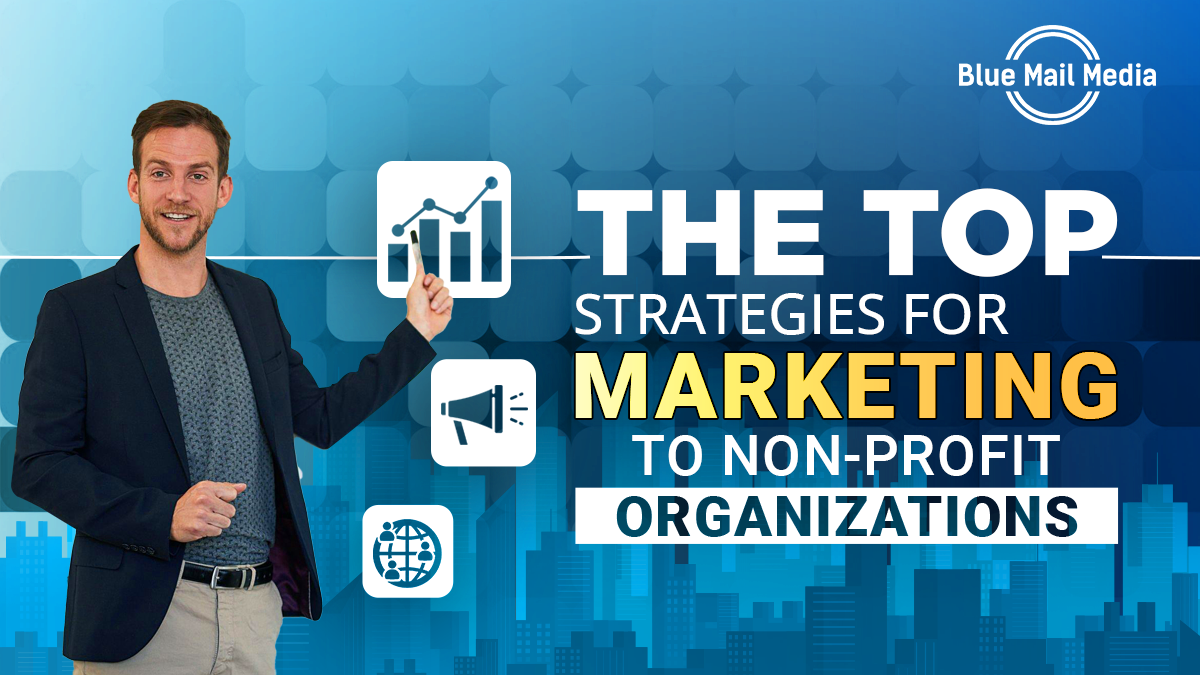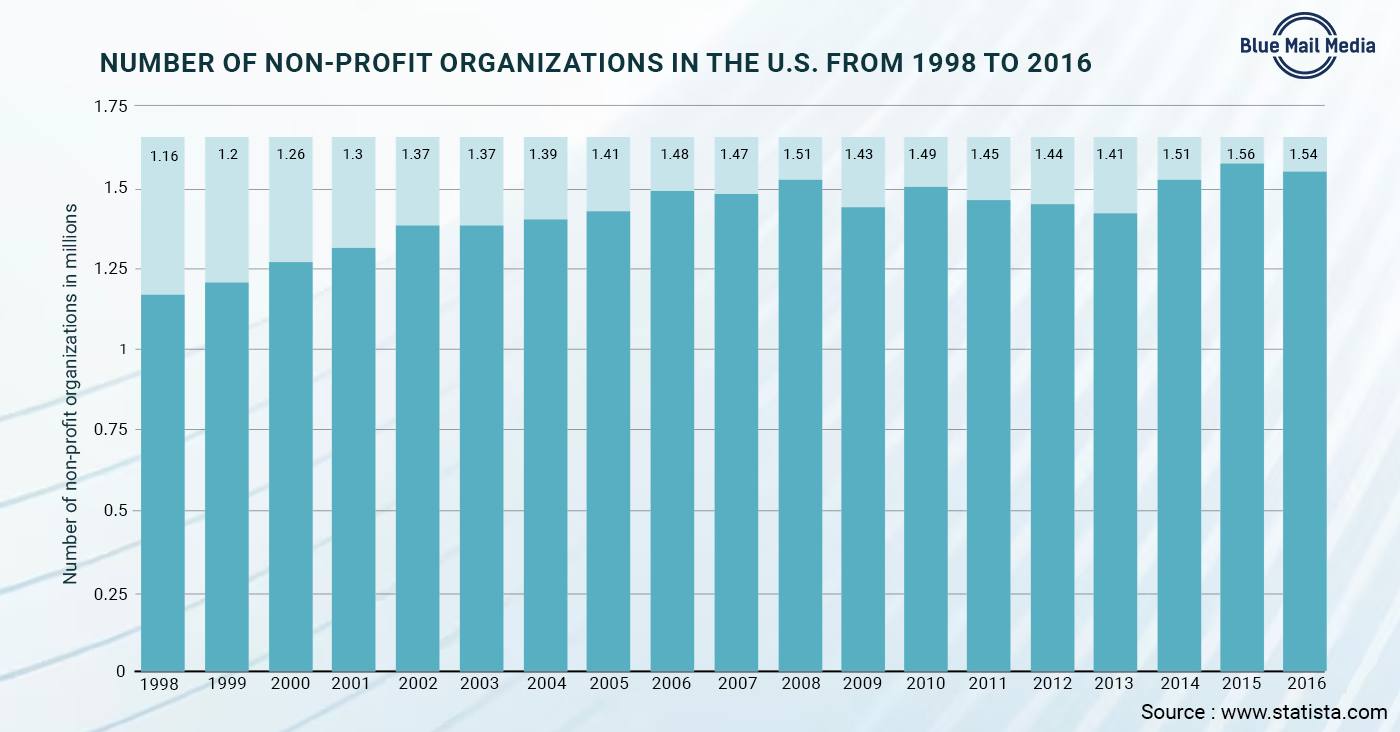Non-profit organizations are often uncharted territory for many marketers. When it comes to B2B marketing, businesses often focus on for-profit businesses since the outcome is more straightforward.
Moreover, the B2B sales and marketing teams often ignore non-profit organizations for reasons like longer sales cycles. There is also a common misconception that non-profits have budget constraints.
But these are not always true.
There are about 1.54 million non-profit organizations in the U.S. alone, with a combined asset of $5.79 trillion and revenue of $2.62 trillion.
Not selling to a non-profit can mean missing out on the market with enormous economic potential. This can make a lot of difference for B2B marketers.
So, to help you get started, here are the top strategies for marketing to non-profit organizations and boosting your outreach.
Identify the Unique Needs of Non-Profits
The priorities of for-profit and non-profits are highly distinct. While the former serves the owner of a business or organization, the latter serves a greater cause and contributes to social improvements.
Therefore, it is crucial to understand the different requirements before you start selling to non-profit organizations.
For instance, non-profit organizations face many challenges during their lifecycle, like generating substantial income, optimizing limited resources, etc.
It is also essential for the non-profits to come up with innovative programs or services to:
- Support a larger number of people
- Stay relevant in a dynamic world
- Implement innovation to increase efficiency
- Boost their fundraising efforts
- Raise the number of volunteers
- Acquire donations
Only after thorough understanding you can address these challenges and help the non-profits excel and impact the world.
So, when marketing to non-profit organizations, you need thorough industry analysis and market research. One of the tools that can help you achieve greater insight into potential non-profit prosects would be the non-profit organizations’ mailing list. You will be able to gather valuable information and have a better understanding of the unique challenges that non-profits face to provide solution.
Pick the Right Non-Profit Type
It is evident from the name that non-profits do not function to make profits but rather impact society. Any donation or earnings these organizations collect go straight to the beneficiaries or are invested into the non-profit for further expansion.
However, not all non-profits are alike.
So, you need to understand the different types and their unique goals if you want to learn how to sell to non-profit organizations.
Some of the common non-profit organizations in the U.S. are:
- 501(c)(1): Corporations organized under an act of Congress
- 501(c)(3): Charitable, religious, or educational organizations
- 501(c)(4): Community social welfare organizations
- 501(c)(5): Labor, agricultural and horticultural organizations
- 501(c)(6): Business leagues
- 501(c)(7): Social and recreational clubs
- 501(c)(8): Fraternal beneficiary societies
- 501(c)(9): Voluntary employees’ beneficiary society
- 501(c)(11): Teachers’ retirement fund associations
- 501(c)(16): Corporations to finance crop operation
- And many more.
B2B businesses can identify these separate categories by reviewing industry associations and studying government statutory bodies like the Internal Revenue Service (IRS).
This is a crucial step since it allows you to analyze your target market better. Wondering how much do non-profit owners make? You can find out about that too.
Moreover, you can learn about its associated industries and which solutions to provide to the non-profit leads.
Build a Flawless Sales Tactic
Your marketing and sales team can develop the right strategy depending on what you find out about the non-profits through your research and analysis.
But the approach needs to be different than how you would target a for-profit business.
It can take some time to understand how to sell to non-profits entirely, but the key here is empathy and encouragement.
The first step to developing the skill of selling to non-profit organizations is to remember that making a profit must not be your priority. Instead, your motivation should be to provide service and help the non-profits in their mission.
Naturally, when marketing to non-profit organizations, the sales pitch needs to prioritize the benefits of your services and products more.
Some effective ways to do this are by:
- Offering goal-based relevant products and services to the prospects
- Having a clear and brief message about the product or service ready
- Developing professional relationships with your potential customers
- Approaching with the goal of offering solutions for a problem
- Following up after closing the deal
When you understand the industry and goal of the targeted non-profit, this gets easier.
Prioritize Value Proposition
Retaining your audience is equally vital as their acquisition when marketing to non-profit organizations. In both cases, however, you would require a strong value proposition.
Of course, this is easier said than done. However, the impact of a compelling strategy can go a long way in helping you achieve your goals.
Apart from adding your client’s values to your leads, you can do the following to boost your value proposition strategy:
- Begin your sales pitch straight with the product specifications
- Make sure that your services or products comply with the legal standards
- Ensure your business model follows ethical practices
- Keep the pricing moderately reasonable
Notably, the value proposition can be of different types, such as:
- Profitability
- Productivity
- Convenience
- Experience
- Image
When selling to non-profit organizations, focusing on brand image, the convenience of use, and productivity is important. The one thing businesses need to understand is that profitability is never the primary objective when approaching non-profits.
For example, a common challenge most non-profits face is finding willing staff. Often this takes away much of their valuable time.
As a business to non-profit lead, you can try solving such issues if you feel your products and services can add value.
For example, if your business provides financial services, you can explain how that can help the non-profits collect and keep track of the funds.
Similarly, an education and training service provider can offer workshops and e-learning facilities to enable the workforce of the non-profits.
Focus on Networking
Networking can go a long way, even if you know how to sell to non-profits. The best part is that you do not always need to actively participate in the activities of the organizations to be associated with them.
No amount of market research can replace first-hand experience. It would also help you decide how you can help the organization better and if it is a suitable prospect for you.
In addition, you can reach out to potential non-profit prospects directly when you are in their circle of confidence.
Wondering how that helps?
Any for-profit business that tries to sell its products and services to a non-profit knows how hesitant the prospects can get initially. The longer sales cycle due to initial hesitation and budget constraint can be tedious for many.
But when you build up a rapport with the prospects, they will be more than willing to listen. This is when you can pitch your value proposition better to explain how it can benefit their purpose.
Be Authentic
Remember that non-profits are mission-driven organizations that thrive on their well-established reputation and trust. Sole proprietors or partners do not run them.
Instead, they rely heavily on volunteers and donors. Most of their “employees” are equally part of the journey. Many often join for a cause in which they have faith.
So, to generate a non-profit lead, it is crucial to remain truthful about your intentions. It is advisable to only associate with non-profits with whom your beliefs are aligned.
When you follow this approach instead of a sales-oriented mindset, you can establish their faith in you.
Remain Patient
As mentioned in the previous points, there are many aspects and challenges to running non-profit organizations. And the priority is not how much do non-profit owners make but what impact they can have.
So, the non-profit decision-makers are usually busy people who tackle these problems simultaneously.
If a business proposition seems to exceed its budget or is not beneficial enough, it might even lose interest.
Also, you must get the deal approved by the board of trustees or committee running the non-profit, as it is not a sole proprietorship.
Therefore, losing patience will not work here.
Of course, the sales cycle does not need to be long always.
This can be shortened through networking, like community engagement, volunteering, and offering a better value proposition. However, persistence and patience are key when selling to non-profit organizations.
Conclusion
The non-profit market is a massive opportunity for building your brand presence, even though the profitability may not always be direct.
Hopefully, the above points will help you understand how to sell to non-profits more effectively. Although standard marketing strategies may not be entirely useless, altering your outlook and priorities for selling to non-profit institutions is crucial.
Instead of a sales-oriented approach, businesses will benefit from focusing on goals they genuinely believe in. It will not only help them scale their business but also allow them to contribute to society.




